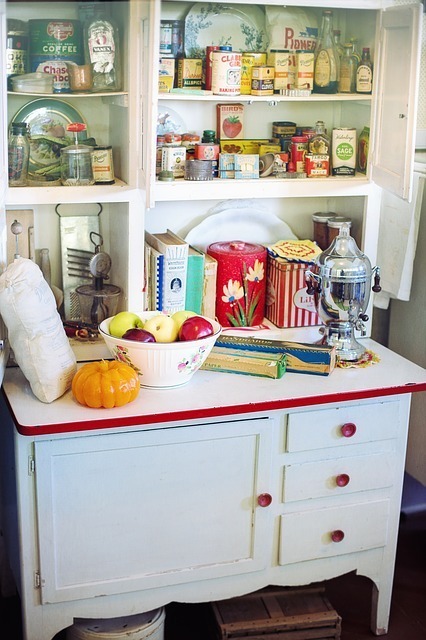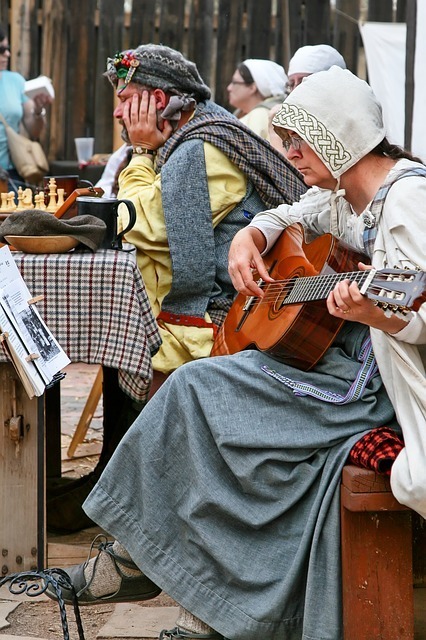Not, I hasten to add, in a cheesy cheap merchandise kind of way, but in a altogether richer, more creative and satisfying way.

“We don’t just read a great book, we inhabit it.” So begins Novel Interiors: Living in Enchanted Rooms Inspired By Literature, by Lisa Borgnes Giramonti. She identifies six sorts of literary decor:
cottage cosy (Austen, Dickens, Alcott…),
classic elegance (Thackeray, Waugh, Wharton…),
earthy & natural (Brontë, L. M. Montgomery, Thoreau…),
modern glamour (Fitzgerald, Hemingway, Maugham…),
bohemian chaos (Durrells, Mansfield, Woolf…)
and fantasticated (Colette, Proust, Wilde…).
But what if your style doesn’t fall neatly into one of those mentioned – or any of them at all? Fear not: there is a way.
The first step is to list your favourite authors and/or books. Concentrate on the ones whose world you vanish into when you open the front cover, and which you find yourself reluctant to leave on the last page. For me, it’s Agatha Christie, P.G. Wodehouse, Ngaio Marsh, Jane Austen, Dorothy Sayers, Charles Dickens, Patricia Wentworth, Ellis Peters, Lois McMaster Bujold, Terry Pratchett, Rumer Godden, C.S. Lewis and J.R.R. Tolkien.
Narrow this down further to the worlds whose aesthetic you find yourself drawn to – and this might well be only part of an author’s oeuvre. You might like Poirot’s modernism but not Miss Marple’s spinstery home; Austen’s grand houses but not her cottages; Tolkien’s hobbit-holes but not his ethereal elven residences.

I’d go for the ladylike residences of Miss Marple, Miss Silver and their ilk; cottages from Austen and Dickens, the monastic simplicity of Brother Cadfael and Brede Abbey, the rich seasonal variety of Chalion, cosy Narnian homes and a good many of the Middle Earth dwellings to boot.
A long list, and yours might be even longer. There are two main approaches from this point: decorate different rooms in different styles (assuming you have sufficient rooms and the idea doesn’t bother you); or refine further to one main theme, with perhaps elements of others which ‘fit’.
Being the fortunate owner of a whole six rooms (not counting the staircase and landing), and not being fond of walking into a different world every time I go through a door, I am taking the second approach. (My staircase may be made of wood, but it is not the Wood Between the Worlds.)
There are several ways to refine your selection. Seeing which ones are sufficiently closely related to work together (Miss Marple and Dickens? I think so) is a good first step. Consulting your home and existing furniture is also an important step – if you live in a slick all-built-in apartment, going hobbity is going to be tricky for you. You’re looking for a compatible style (although some houses are more flexible than others). And of course, you want to be sure that whatever you choose is not “a nice place to visit, but I wouldn’t want to live there.”

Since my home is a mostly unaltered row house from the 1940s, going full-on Chalionese provincar’s residence or Rohirric horse-lord’s hall is not really going to be an option. But many items on my list are close enough to work well together: the homes of Miss Marple, Mr Tumnus, Miss Silver and cottage-dwellers throughout literature have many points of commonality, although there is a social range from upper-middle to lower-working available within that aesthetic. I can even include a degree of monastic simplicity, since I don’t care for the stuff-on-every-surface school of cottage decor.
Once you’ve settled on your intended style or styles, you need some way of referring back to it. Words may be your friend here, or images, or even a piece of music. Go for whatever evokes the feeling you’re going for. And why not take this opportunity to re-read all your favourites with an eye to specifics?
Then you’re ready to start making actual changes. There are four main ways you can do this (and a secret fifth which is never mentioned in interior design books).
The first way is to Add. Interior design books tend to be very big on this. Indeed, I have lost track of the number of books which suggest what amounts to props sitting around your house creating ambiance – such as the book in praise of old things which suggested your old-style kitchen should have a section of bench set aside for putting old kitchen equipment on. Not to use, you understand, just to… accessorize, i.e. gather dust.

This sort of faux history does not appeal to me. People back in the day didn’t have piles of useless stuff sitting around their homes, so why would I do that as a way to hark back to those times?
This is not to say that I don’t have old things in my house. To take the example of the kitchen, I have a 95 year old teapot and my grandparents’ jugs in my kitchen – but they’re there to be used, and they are.
The second way – and this is less commonly mentioned in such books, but is considerably cheaper – is to Subtract. Indeed, for some aesthetics, this is absolutely essential. If you want your home to have an air of monastic simplicity, it’ll take more than a poster of the Book of Kells looking down over all the piles of modern stuff to create the desired effect. This is not to say that you actually have to live like a medieval monk, but you do need to pay attention to the underlying principles.
Next up, and also fairly cheap, is to Rearrange. Rearrange furniture, rearrange what you put where – even rearrange which room you use for what, plumbing permitting. This can include putting things which are redolent of your desired world front and centre, while the mechanisms of modern life take a back seat in a less visible way.
Fourthly, you can Alter things. Paint it, strip it, cut it to pieces and make it into a couch cushion… Use things for different purposes. We’ve repurposed one toast-rack as a holder for mail etc. on its way out of the house; and another as a holder for the new Trivial Pursuit cards. Never mind chucking out everything you have and buying new (or even buying second-hand): look at what you’ve already got – and imagine what it could become.

Of course, all this doesn’t have to be limited to your decor. What about your pastimes? Take up tatting, or chess, or cottage gardening. What about your clothes? You may be limited by a dress-code at work, but if you want to potter about the house of an evening in a Chalionese vest-cloak, or wear a habit-ish (or hobbitish) dressing-gown, what’s to stop you?
And the secret fifth way? It has nothing to do with your decor, really. The fifth way to live in your favourite book is to incorporate its principles, its ethic, into your life, whether that be loyalty, devotion to duty, warm hospitality, serene prayerfulness, sheer adventurousness or something else entirely.
What are your favourite books or authors – and what might you do to bring them a little more into your life?
